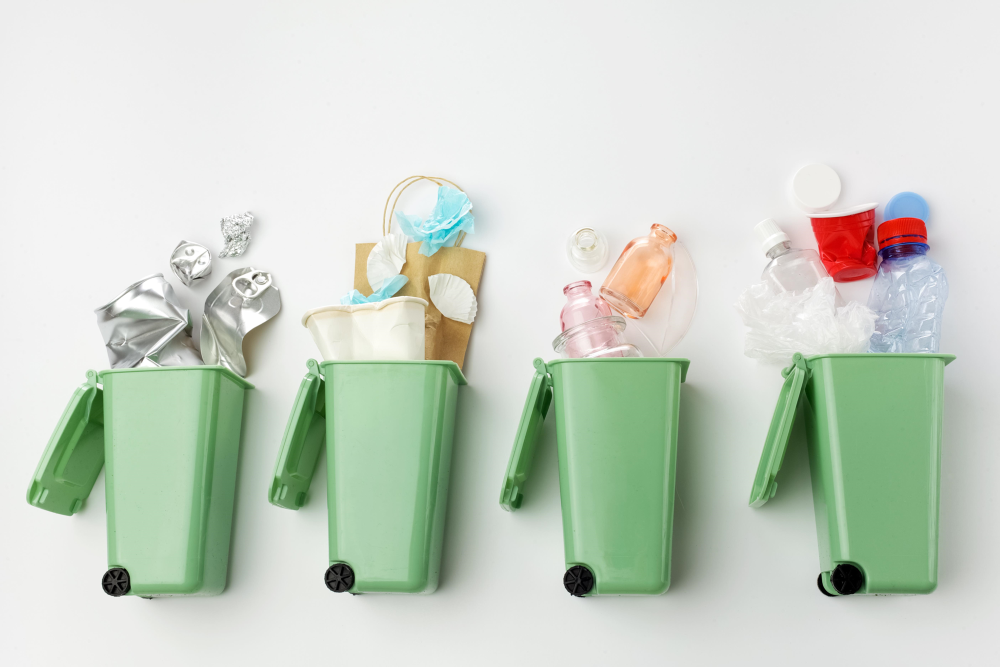The plastics sector is under attack on many levels, and much of the criticism is centred on misunderstandings related to recycling.
We are told that plastic recycling rates are too low because they are hard to recycle, and that we need new technologies to solve the problem. I often see the claim that we need recycling to solve waste and litter problems.
However, as explained in my Plastics Paradox book, most of what we have been told about plastics and the environment is simply untrue.
Let’s examine common perceptions about plastics recycling and see what science says about them.
Myths under the microscope
One of the most common claims is that we need to recycle plastics at a much higher rate in order for plastics to become truly environment friendly. Scores of lifecycle studies spanning decades show that plastics are the option that causes least impact. Replacing plastics with alternatives such as paper, cotton, metals, or glass increases harm, not only in terms of greenhouse gas emissions but waste created, fuel used, and total impact across all of the several factors included in modern lifecycle studies (Plastics & the Environment; Fact Over Fiction).
Some of those lifecycle studies also ran scenarios assuming different recycling rates for plastics and other materials. They concluded that plastics create less impact even with low, or no recycling at all. So, it is unreasonable to suggest that we should wait for recycling to evolve in order to make plastics the right choice for the environment.
Even so, it makes sense to encourage recycling because recycled plastic requires far less energy and creates far less greenhouse gas compared to creating new plastic. Typical reductions are 70-80%, which is achieved using the standard, inexpensive method of mechanical recycling. That entails collecting the plastic, separating, washing, shredding, and remolding it into a new product. (Life Cycle Impacts of Plastic Packaging Compared to Substitutes in the United States and Canada, Franklin Associates for The Plastics Division of the American Chemistry Council, 2018 C. Wong, A Study of Plastic Recycling Supply Chain, University of Hull, 2010)
You may have seen that there are huge, highly funded projects to create new types of recycling. These so-called advanced recycling methods such as chemical recycling or dissolving the plastic in solvent, or pyrolysis where the plastic is heated and converted into oils or monomers (the building blocks of plastics).
A popular perception is that we are waiting for advanced recycling to make plastics green, when, in reality, standard mechanical recycling works fine for about 90% of the plastic types we use, including polyethylene (PE), polypropylene (PP), polyethylene terephthalate (PET), and polyvinyl chloride (PVC). These more expensive, more complex alternatives may eventually have a place, but they are not the key to success. Mechanical recycling is proven to be environmentally sound, and it uses machinery already installed all over the world. Those machines, called extruders, are also used to process new plastics.
You might ask how can mechanical recycling be so widely applicable when soft plastics such as bags cannot be recycled that way and that black and other coloured plastics cannot be recycled mechanically. The simple answer is that those claims about recyclability are also untrue.
Soft plastics like the low-density polyethylene (LDPE) from grocery bags can be recycled, and are recycled. One company in Germany has recycled over 100,000 tons a year profitably for the past several years, and they are not alone (ecoLoop/I’m eco; recycling protects the environment).
Soft plastic can cause jams in machines not designed to handle them, so rather than install the correct machines, many just label the soft plastics as unrecyclable. Responsible organizations, on the other hand, solve the problem.
Coloured plastics have also been labeled unrecyclable when, in fact, they can be recycled perfectly well. Some groups prefer not to have to deal with them because the resale value of colored plastic is lower.
Many years ago, it was found that the most common black colourant, carbon black, prevented plastics from being sorted automatically because they confused the detectors. However, that problem was solved long ago by finding black colourants that do not interfere with sorting. See, for example, the REC-NIR Black™ from Ampacet. I still see claims that black plastic cannot be sorted and recycled, but that is not the case.
Sprite recently removed the iconic green colour from their PET bottles, so now they are colourless. Why? Because there is more demand for colourless recycled plastic, so the market value is higher. That’s why colourless plastics are preferred for recycling. Both coloured and uncoloured are recyclable, but let’s talk about what recyclable really means.
According to Cambridge Dictionary, “recyclable” simply means “able to be recycled”.
Plastics are recyclable, and they remain recyclable regardless of whether or not they get recycled. So-called environmental groups have launched legal battles over this. They assert that the customer was misled by claims that the product was “recyclable” when in reality, the probability that it would be recycled was low. They lost those battles because both the dictionary and science say that they were wrong.
Whether something can be recycled is called recyclability. Whether something is likely to be recycled in a particular locality is another concept and might require a new word – e.g., “recycle-likely”.
Many people struggle with this concept, so here is an analogy:
A football is “kickable”, and it remains kickable whether or not we choose to actually kick it. The same applies to recycling.
What about pyrolysis as a way to deal with used plastic? Lifecycle studies on pyrolysis reveal that it does not make environmental sense. The same goes for other approaches, including dissolving the plastic in solvents, or using enzymes to break down the plastic into new monomers.
While technically feasible, these methods usually turn out to be red herrings when one considers the investments needed and the impact of the process itself. Why then are there so many headlines and projects on them? That is because many people will do whatever it takes to get funded, even if a project is not practically or economically viable. Some have criticized attempts at advanced recycling, and they have a point. Spending time and money on technologies that do not make sense only increases environmental impact.
You may have heard that plastics can only be recycled a couple of times, whereas metal and glass can be recycled indefinitely, so we should pick metal and glass over plastic. However, that premise is false. In fact, plastic can be recycled many times with good properties as shown by multiple, peer-reviewed studies.
Here is a quote from a study in which researchers put LDPE through an extruder to recycle it 100 times:
“With these results on hand, it could be concluded that LDPE could be extruded for up to 40 times without significantly changing its processability and long-time mechanical properties.”
H. Jin et al., The effect of extensive mechanical recycling on the properties of low-density polyethylene, Polymer Degradation and Stability, 97, pp 2262-2272, 2012
Similar studies have shown that other common plastics including high-density polyethylene (HDPE), PP, and PET can be recycled multiple times with good retention of properties.
A. Boldizar et al., Simulated recycling of post-consumer high density polyethylene material, Polymer Degradation and Stability, 68, (3), pp 317-319, 2000
R. Mnif & R. Elleuch, Effects of reprocessing cycles and ageing on the rheological and mechanical properties of virgin-recycled HDPE blends, Matériaux & Techniques 103, 704, 2015
M. Mihelčič et al., Influence of Stabilization Additive on Rheological, Thermal and Mechanical Properties of Recycled Polypropylene, Polymers, 14 (24), 5438, 2022
B. von Vacano et al., Elucidating pathways of polypropylene chain cleavage and stabilization for multiple loop mechanical recycling, Journal of Polymer Science, 1-10, 2023
As for the claim that metal and glass can be infinitely recycled, we know that no material can be recycled indefinitely because of contamination and losses during the process. Such losses are well documented for metals and glass.
We hear that increasing the recycling rate will solve the problem of “plastic pollution”. However, what many are calling “pollution” is actually litter. Whereas pollution is associated with companies, litter is caused by people, and the solutions to that involve changing behaviour via education, deposits, and fines.
E. Carpenter & S. Wolverton, Plastic litter in streams: The behavioral archaeology of a pervasive environmental problem, Applied Geography, 84, pp 93-101, 2017
Of course, companies and governments bodies have also been guilty of irresponsible waste practices, and we should be striving for environmental harm reduction at every level.
Will increased recycling actually help to reduce litter? While there is no evidence that people litter less when a product is recyclable, often recycling does lead to less litter indirectly. In order to increase collection rates, it is common to impose a deposit on items, and those deposits have been shown to spur large decreases in litter. Once the product has value, due to the deposit, people do not drop it any more. If they do, someone else will pick it up to collect the deposit.
A good analogy here is plastic bank notes. They print billions of plastic bank notes every year – how many do you see in the streets, floating down rivers, or on beaches? We never see them littered because although they are small and easily lost, they have value, so people take care of them.
Lastly, some so-called environmental groups have asserted that recycling is a scam and that it can never work. We know that to be false. Some groups concoct such stories to make people upset enough to donate.
Said Greenpeace co-founder Patrick Moore: “The ‘environmental’ movement has become more of a political movement than an environmental movement. They are primarily focused on creating narratives, stories, that are designed to instill fear and guilt into the public so the public will send them money.” (Greenpeace founder Patrick Moore says climate change based on false narratives)
Conclusions
Like all materials and everything we do, plastics have an impact. However, decades of lifecycle studies indicate that plastic is almost always the option that minimizes material use, greenhouse gas, fossil fuel use, and total impact. Recycling works, and rates are high in many countries.
Recycling rates are disappointingly low in the U.S., but it is working to improve. Mechanical recycling is cheap, proven, and works with existing equipment. Let’s be wise, which means picking the option that minimizes impact, then reuse, and recycle it.
Plenty of scientific study suggests that we can be for the environment, or against plastics, but not both at the same time. It is important that we understand the fundamental principles discussed here, so that costs do not continue to rise, in terms of both consumer expenditure and environmental harm.
(Chris DeArmitt – BIG Media Ltd., 2024)


